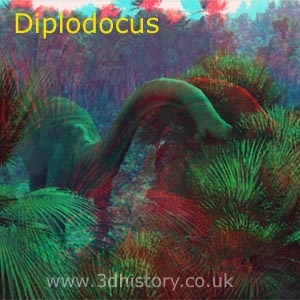|
The Jurassic period was the middle period of the Mesozoic era. The name Jurassic comes from the Jura Mountains between France and Switzerland where the rocks formed during this period were first studied. The world at this time showed that it was a more equable climate, forests of conifers and ferns began to develop, birds began to evolve from the dinosaurs and limestone and iron ore were deposited. In the early Jurassic period the size of the dinosaurs increased steadily and eventually, towards the middle of the Jurassic period, the Prosauropods began to disappear. As they became extinct another species of dinosaur the Sauropods began to replace them. These animals thrived right through the remainder of the Jurassic and well into the early Cretaceous period Sauropods like Diplodocus grew to about 30m in length, had massive bodies with extremely long necks and whip like tails and walked on all fours. |
|

